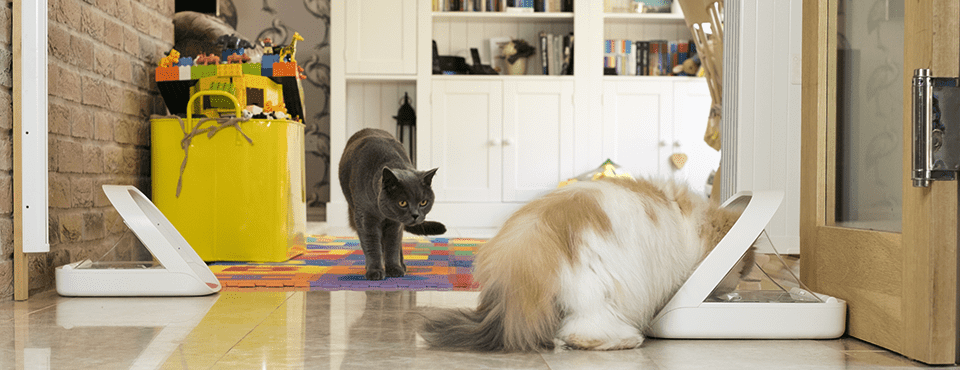Canine Otitis: What is It and How is It Treated?
HEALTH & PROTECTION
7 Jun, 2020
READ 7 minutes

DOES MY DOG HAVE AN EAR INFECTION?
When your dog is shaking his or her head or rubbing his or her ears on the ground – or maybe your furry friend just seems irritable and unhappy – there is a chance that a common canine affliction is to blame, Otitis. Generally known as an ear infection, otitis externa in dogs is an inflammation in the external ear canal that can be quite painful for your four-legged companion.
HOW DID MY DOG GET AN EAR INFECTION?
Anatomically speaking, dogs are simply predisposed to contract otitis, some breeds more than others. Dogs’ ear canals are L-shaped, which makes it difficult for fluid to drain from canal openings. Otitis Externa occurs in the ear canal however, this can develop into Otitis Media, which is an inflammation in the middle ear. When this occurs, fluid builds up behind the ear drum, causing pressure and pain. Breeds such as the Cocker Spaniel and German Shepherd are particularly prone to develop otitis, as are Shar Peis, who have small ear canals, and Basset Hounds, with their long ear flaps. The good news is that there are well known treatments for dog ear infections as your vet sees this affliction quite often.

WHAT ARE COMMON CAUSES OF OTITIS EXTERNA IN DOGS?
In puppies, otitis externa is often caused by ear mites. These are tiny parasites that are also extremely common, causing terrible itching, often accompanied by a thick brown discharge.
Most adult dogs end up with otitis as a result of an allergic reaction – sensitivity to something in the environment or to a food. This occurs in almost 90 percent of cases. Look out for a rash somewhere on the body at the same time that your dog’s ears are affected.
Foreign bodies can also lead to otitis. These are things like a blade of grass or a seed that has somehow found its way into your dog’s ear and gotten stuck in the ear canal, it serves as a source of constant irritation with pain and inflammation being the result.
There are a few other possible predisposing causes behind your dog’s otitis. These include the following:
- Poor ear cleaning (for example, use of sharp instruments)
- Fluids that are unable to drain from the ear canal
- Insect bites
- Hormonal problems
- Poor thyroid function
- Underlying skin disorders
HOW CAN I TELL IF MY DOG HAS AN EAR INFECTION?
Your dog isn’t great at telling you when something is bothering him or her. It’s up to you to watch carefully for the signs of otitis. These may include the following:
- Constant shaking or tilting of the head
- Rubbing head and ears on the ground (a form of itching!)
- Frequent scratching of the head or ears
- The ear canals may be reddened
- There might be a strange smell in the ears
- Discharge from the ears is also possible
- Some dogs may behave aggressively due to the pain, especially when touched on the head or they simply become head shy and avoid having their head touched
If your dog suffers otitis as the result of an allergy, other parts of the body are likely to be inflamed, itchy or have a rash. You can most likely find rashes on the paws, the inner legs, or on your dog’s face.
When the culprit for otitis is a foreign body, the symptoms start rather suddenly. You might see your four-legged friend shaking his or her head violently, as if to get rid of whatever has entered the ear. It is also typical that only one ear is affected.
Infections due to parasites, on the other hand, are usually chronic. These develop slowly and symptoms increase over time. And some ear infections, such as bacterial or yeast, are associated with an odour.

EARLY TREATMENT IS THE MOST EFFECTIVE TREATMENT
If you suspect your canine friend has a case of otitis of any sort, or for any reason, it’s best to consult your veterinarian right away. If an acute infection lingers for a long period of time, it may become chronic. This can lead to serious impact on the glands in the canal, which can then predispose the dog to a secondary infection or worse, long-term hearing problems.
HOW IS MY DOG’S EAR INFECTION TREATED?
Effective treatment of otitis includes attention to both the inflammation, which is the cause for discomfort in your dog, and treatment of the infection or underlying condition itself. Your veterinarian will also want to determine the underlying factors that lead to the development of the ear infection in the first place. Most dogs, regardless of the cause of their individual case of otitis, will be treated with anti-inflammatory therapy to reduce pain and itching.
Your vet may perform allergy testing at a later stage in order to identify the trigger causing the otitis, and if infection is suspected, a swab test may be performed to confirm this. Appropriate treatments will be prescribed by your vet according to the findings, whether they are allergy medications or antibiotics for the infection.
In the case of a foreign object lodged in the ear canal, the vet will gently remove it and treat the otitis as necessary.
If the infection is very severe your vet will most likely administer a thorough cleaning before starting treatment. Ear cleaning also helps to break up any encrustation or biofilm that may be covering the ear canal lining and would otherwise prevent effective treatment.
Follow-up evaluation is often necessary while your dog is being treated for otitis. This is important in order to determine if treatment is effective and to confirm that any of the predisposing or perpetuating factors that caused the infection are no longer present.

HOW CAN I PREVENT EAR INFECTION IN MY DOG?
The best prevention of otitis is early detection of predisposing factors (conformation, ear canal maceration, climatic variation, obstructive ear disease, anal sac disease, fever, systemic disease or treatment errors).
Making sure your dog has annual physical exams with your veterinarian, which include an examination of the ear canal, will help detect mild and early cases of otitis.
While there are few effective preventative measures clinically speaking, there are some things you can do to lessen the odds for your pooch. These include:
Make sure ears are thoroughly dried after a bath (avoid going into the ear canal).
If your dog has bushy, thick hair inside the ears, ask your veterinarian or groomer to trim it regularly
If your dog is prone to ear infections, talk to your vet about cleaning his or her ears regularly, over the counter ear cleaners, such as Oto-Aid, can be purchased from your local vet or vet shop.
Be sure to bring your dog to the vet for all follow-up appointments and follow instructions with regard to medications and topical applications.
If your dog does get an ear infection, it is most important to do what you can to prevent the development of further complications. Issues such as chronic otitis, hearing loss, otitis media, othaematoma (blood blister formation) and ear disease can potentially be avoided if you watch for the signs in your pup and follow instructions provided by your veterinarian.

RELATED POSTS
-

Learn about canine babesiosis, a tick-borne disease that affects dogs worldwide. Discover its symptoms, treatments, and how to prevent it.
-

Explore how diabetes impacts cats, its signs, risk factors, and effective management through medication and diet for a healthier feline life.
-

Diabetes affects an estimated 1 in 300 dogs, diabetes is more common in middle-aged and older dogs (4-14 years of age), it can be diagnosed in dogs of any age, including young dogs. Read more.
-

Ever wonder how your dog experiences the world? Why he or she sniffs everything, everywhere? Read more and find out








